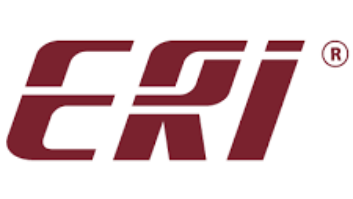It’s been a rough winter for some of us, so an early spring is on many minds. If your transmitter site, studio or home didn’t lose power at some point because of trees falling on power lines, count yourself lucky.
Tom Bruce is with Canyon Lake Broadcasting in Texas. He has been doing broadcast contracting for about 15 years; prior to that he worked in sales and electronic security design. He’s been a ham since 1962, and he reads Radio World.
He sent in a number of tips with regard to Bob Culver’s single-phasing/neutral problem, discussed in the Jan. 12 Workbench. They apply to anyone with overhead feeders to a site.
First, if the cable that’s breaking is on “your side” of the meter, it is the station owner’s problem; but if the problem cable is before the meter box, the power company has the duty to trim the tree(s) that are getting into their easement (usually 10 feet either side of the line).

Fig. 1: Power lines are up there somewhere! Keep the right of way clear to minimize tree-induced power failures. Tom recommends burying the cables, though this can be costly. Another suggestion is to remove the offending trees, if possible.
You might also design a circuit that will monitor the voltage on both 120-volt legs and trip a relay when the difference between the legs is greater than 20 V. The circuit would engage an automatic power transfer switch to disconnect incoming power or a contactor that is rated for the load of the building.
Most remote control systems are able to monitor voltages; a window is set for the particular channel. Thus, you could monitor the voltage on each side of the AC power line by constructing a 10:1 voltage divider that would drop the AC voltage from 120 V to 12 V. You will need to rectify this voltage to get a DC sample. Program the controller to call when the voltage exceeds 12.75 volts or is less than 10.75 volts. A more sophisticated controller could even trip a breaker that would open the power feed.
Since the site is unmanned, and remote, the ability to trip a breaker makes the most sense.
* * *
Nick Markowitz is proprietor of Markowitz Electric and Integration. Nick adds to Tom’s suggestions by stating that he would be all over the state public utility commission to go after the power company to get those trees cut. Again, if those trees are in the right of way, the utility company is responsible in most states.
But Nick adds another point to check in our Jan. 12 case study. It sounds like the grounding grid was not very good, and should be checked. Nick has seen buildings operate close to normal even after losing the neutral completely. If the amperage load on the service is highly unbalanced, this will cause problems. The closer each phase is to each other, the fewer problems you have, and more power you save.
Finally, look into a company called Time Mark. The company makes all kinds of specialized relays for phase loss and imbalance, which could be tied to a shunt trip breaker or heavy-duty contactor to break power. Nick has used these at numerous industrial sites to shut down motor and sensitive loads when there’s a power imbalance.
Nick writes that he also does a lot of telco work for customers, including studios. He’s found a company called Viking Electronics that sells unique items for solving related-related problems.
Do you need a relay to turn on a light when phone is ringing, or signal an off-hook condition? You’ll find it here. The company also sells auto dialers and even a ring booster for older phones, not to mention security and alarm equipment. Anyone with an NAB Transmitter Workshop booklet will remember this company highlighted in it. If it deals with telephones, these guys have it.
* * *
I know Christmas is a distant memory, but Wolfram Engineering principal Greg Muir sent a link to a December story about copper thieves destroying the Birmingham City Christmas tree. Yes, copper thieves. They were after the Christmas light wiring, which they removed from the tree.
If that wasn’t bad enough, they then used gasoline to set the wiring on fire, to separate the plastic insulation from the copper wire. Things got out of hand, and the next thing they knew, the Christmas tree was ignited. Here’s the link: http://tinyurl.com/rwbench1.

Fig. 2: Be alert to possible water damage as snow melts and spring rains arrive. * * *
Fig. 2 gives us pause to watch our transmitter sites as melting snow and rain arrive in the next couple of months. We’ve mentioned the WaterBug in past columns. For around $50, this battery-operated sensor can be tied to your remote control system to warn of water ingress. See www.winland.com. It’s cheap insurance!
John Bisset marked his 40th year in radio in broadcasting recently. He works for Tieline Technology and is a past recipient of the SBE’s Educator of the Year Award. Reach him at [email protected] or (603) 472-5282. Faxed submissions can be sent to (603) 472-4944.
Submissions for this column are encouraged and qualify for SBE recertification credit.












